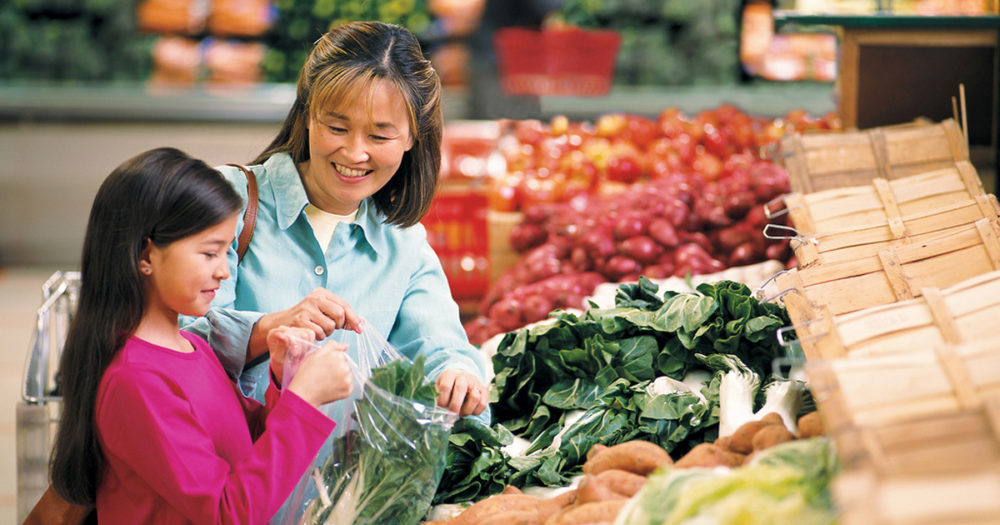If you read “Steve King” and think of novelist Stephen King, don’t worry too much about it.
Iowa Representative Steve King dabbled in fear and fiction himself in an interview with CNN last Wednesday, suggesting that a US-Mexico border wall be funded with dollars from Planned Parenthood and the food stamp program.

Photo: CC BY SA/Gage Skidmore
This particular idea was new, but the sentiments King expressed about the Supplemental Nutrition Assistance Program (SNAP) and the people who use it, less so. With 2018 farm bill talks underway, misconceptions about the program and who it serves have manifested with increasing frequency, and setting the record straight about these misconceptions is more important than ever. Policymakers like King, who is a member of both the House Committee on Agriculture and its Nutrition Subcommittee, hold the fate of 21 million SNAP households in their hands, and it’s critical that they’re relying on complete and correct information to make decisions about this program.
Here’s a quick deconstruction of what was said—and what needs to be said—about Americans who use food stamps.
“And the rest of [the funding beyond Planned Parenthood cuts] could come out of food stamps and the entitlements that are being spread out for people that haven’t worked in three generations.”
The idea that food stamp users are “freeloaders” is perhaps one of the most common and least accurate. The truth is, most SNAP participants who can work, do work. USDA data shows that about two-thirds of SNAP participants are children, elderly, or disabled; 22 percent work full time, are caretakers, or participate in a training program; and only 14 percent are working less than 30 hours per week, are unemployed, or are registered for work. Moreover, among households with adults who are able to work, over three-quarters of adults held a job in the year before or after receiving SNAP—meaning the program is effectively helping families fill temporary gaps in employment. King’s constituents are no exception: in his own congressional district, over half of all households receiving SNAP included a person who worked within the past 12 months, and over a third included two or more people who worked within the past 12 months.
“I would just say let’s limit it to that — anybody who wants to have food stamps, it’s up to the school lunch program, that’s fine.”
The national school lunch program provides one meal per day to eligible children. Kids who receive free or reduced price lunch are also eligible to receive breakfast at school through the program, but only about half do. Even fewer kids receive free meals in the summer: less than ten percent of kids who receive free or reduced price lunch at school get free lunches when they’re out of school. This means that, for millions of families, SNAP benefits are critical to filling in the gaps so kids can eat. In fact, USDA data shows that more than 4 in 10 SNAP users are kids. Again, these patterns hold true in King’s district: over half the households that rely on SNAP benefits include children.
“We have seen this go from 19 million people on, now, the SNAP program, up to 47 million people on the SNAP program.”
True. In 1987, average participation in SNAP was around 19 million. In 2013, it peaked at 47 million, and dropped to around 44 million by 2016. The increase over this time period is attributable, at least in part, to changes in program enrollment and benefit rules between 2007 and 2011 and greater participation among eligible populations. However, participation data also demonstrates SNAP’s effective response to economic recession and growth. For example, there was an increase in 2008 as the recession caused more families to fall below the poverty line, and in 2014, for the first time since 2007, participation and total costs began to steadily decrease in the wake of economic recovery. Congressional Budget Office estimates predict that by 2027, the percentage of the population receiving SNAP will return close to the levels seen in 2007.
“We built the program because to solve the problem of malnutrition in America, and now we have a problem of obesity.”
It is undeniable that rising rates of obesity are a significant public health threat. But obesity is an incredibly complex phenomenon, the pathophysiology of which involves myriad social, cultural and biological factors. It is a different type of malnutrition, and we will not solve it simply by taking food away from those who can’t afford it. If we want to focus on increasing the nutritional quality of foods eaten by SNAP recipients, we can look to programs that have been successful in shifting dietary patterns to promote greater fruit and vegetable intake, using strategies such as behavioral economics or incentive programs. Truth be told, most of us—SNAP users or not—would benefit from consuming more nutrient-dense foods like fruits and vegetables.
“I’m sure that all of them didn’t need it.”
Without a doubt. And this could be said of nearly any federal assistance program. But the goal of the federal safety net is not to tailor programs to the specific needs of each person or family—this would be nearly impossible, and the more precise a system gets, the more regulation is required and the greater the administrative burden and financial strain becomes. The goal of federal assistance programs like SNAP is to do the most good for the greatest amount of people, within a system that most effectively allocates a limited amount of resources. And I’d venture to say that a program designed to lift millions of Americans out of poverty—with one of the lowest fraud rates of any federal program, an economic multiplier effect of $1.80 for every $1 spent in benefits, and an ability to reduce food insecurity rates by a full 30 percent—comes closer to hitting its mark than a wall.

